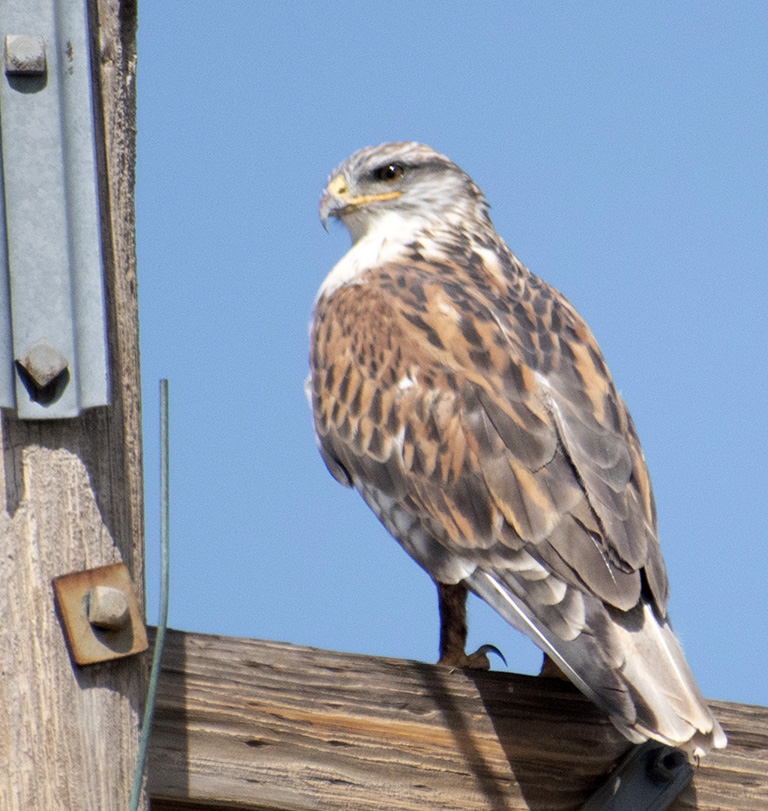
by Grace Huffman
One of my favorite things about winter is the diversity of raptors that descend upon the state. Bald Eagles become more numerous, Sharp-shinned Hawks arrive and start eyeing bird feeders, Northern Harriers glide over fields, and Short-eared Owls come out at dusk if you know where to look. And in the western part of the state, Ferruginous Hawks perch on trees and telephone poles near open fields, watching for their next meal.
Ferruginous Hawks are larger cousins to our Red-tailed Hawks that are here year-round. Ferruginous Hawks are year-round only in the panhandle, but can be found across the western parts of the state in the winter, becoming less common as you go east. They are larger than Red-tails, and can be found in two color morphs. The dark morph is a warm brown all over except for the tail (which is white), and only make up a very small portion of the population. The much more common light morph has beautiful rusty shoulders & feathered legs, with a very pale underside.
Ferruginous Hawks can be found as far north as Alberta and Saskatchewan provinces in Canada in the summertime, and Mexico in the wintertime. On their breeding grounds, they will build a massive stick nest, or even refurbish one left behind by other hawks or crows. Conservationists have taken advantage of this by providing them artificial nests to help boost the population. The female lines the nest with items like tree bark and even sometimes cow dung! Once the nest is built it can take over two month for the eggs to hatch and the young to fledge.
Generally solitary unless with their mate, Ferruginous Hawks have been known to gather in small groups on wintering grounds where food is plentiful (like a prairie dog town), and even roost together.
My first time seeing a Ferruginous Hawk was this past September on my trip out to the Black Mesa area. It was perched up on a telephone pole and let us get rather close to it and take quite a few photos of it before it flew off. Every time we drove past that telephone pole it was there or on a pole close to it. Thankfully they are listed as least concern and their population is considered to be largely stable.
